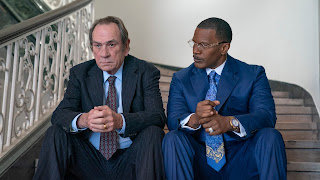From Stage to Screen
There have been a number of stage plays that have been translated to the big screen, but it can be a tricky thing. I know, that sounds obvious, but I couldn't help but think about that last night as I watched Tyler Perry's cinematic adaptation of "For Colored Girls."
Based on a stage production written by a poet in the 1970s, there are a number of weighty themes in "For Colored Girls." While the film boasts strong performances and a tough but powerful story, there are elements about its construction that don't work as a film.
The thing is that audiences give a lot of leeway to stage productions. You have to use your imagination a lot to fill in the gaps, and you expect all the characters to come together in one or two static locations in a play because they are limited to the stage. But the leeway is greater than that.
In a stage play we accept that characters are going to have long, dramatic monologues and that they may give speeches to the audience. It's all part of the trappings of the world of live theater. But when that gets adapted for the big screen, the leeway shrinks. Those same dramatic asides that make perfect sense in the confines of the stage feel a bit out of place in the world of film.
The reason is the fourth wall. During a stage play, it's easy to break the wall in the moment. When you're tucked into the dark confines of a movie theater, that wall is hard to penetrate. Especially when the dramatic speeches come in the form of figurative poems.
Doubtless those rough edges will impact the perceived effectiveness of this film. While the story is compelling, it's hard to shift back and forth from typical film dialogue to dramatic stage speeches. When you're all too aware you are watching a stage play adapted for the big screen it saps some of the magic from the presentation.



Comments
Post a Comment